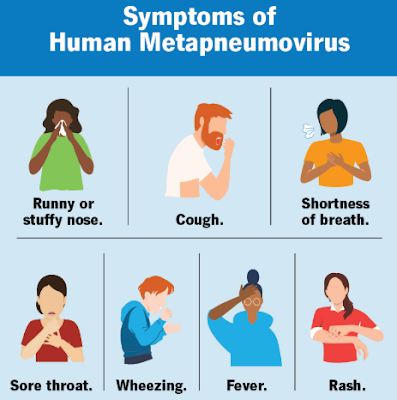What is Human Metapneumovirus (HMPV)? 🦠
HMPV is a respiratory virus that shares symptoms with common colds or flu, such as mild fever, runny nose, cough, and congestion. It can affect people of all ages, but younger children, the elderly, and those with weakened immune systems are most vulnerable. While not a new virus, having been previously reported in countries like the USA, Canada, and several European nations around 2011-12, the current surge in China is sparking concern.
Rising Cases in China: What We Know So Far 📊
As of the early weeks of 2025, HMPV cases were seen to spike rapidly in China, especially among children. Footages from hospitals being overcrowded were spread on social media, sending people into fear of an outbreak that the world had witnessed due to COVID-19. The Chinese government has taken proactive steps, testing a monitoring system for pneumonia of unknown origin so that it does not repeat the mistakes of its early days during the COVID-19 pandemic.
Though there has been an alarming increase in cases, no confirmed cases have been reported from India, but health authorities are vigilant and on their toes monitoring respiratory illnesses, which includes seasonal influenza cases.
Is HMPV Likely to Reach India? 🇮🇳
Experts have pointed out that the symptoms of HMPV are very similar to those of COVID-19, which has sparked fears of another pandemic-like situation. Dr. Arun Gupta, President of the Delhi Medical Council, said that though the virus is alarming, there is no cause for panic. He said that, at least for now, there is no indication that HMPV is a threat to India.
However, Dr. Gupta cautioned that a close watch should be maintained, especially because HMPV and COVID-19 are so similar in their clinical presentation. As he pointed out, distinguishing between the two viruses would require a specific viral test.
How Does HMPV Spread? 🌍
Much like COVID-19, HMPV is spread through droplets from coughing or sneezing, and by close contact, such as touching an infected person to shake hands. It can also be spread via contaminated surfaces which, when transferred to the face by touching after contact with an infected surface, can enter into the mouth, nose, or eyes.
Given these transmission patterns, health experts advise that precautionary measures, as in wearing masks at crowded hotspots, avoiding close contact with the infected cases, or maintaining good hygiene, such as frequent hand washing. Although one needs to be alert, no one in the scientific world has considered HMPV as a global threat in the immediate future. Dr. Gupta made it clear that there is nothing to worry at present, but India should closely monitor the situation. The chances of cross-border transmission are very much there due to the current pattern of international travel. Till date, no report of the spread of HMPV has been reported from outside China.
Precautionary Measures 🛡️
The doctors advise now, for the time being, to take precautions as adopted by most people during the COVID-19 pandemic—to mask in crowded places, avoid social distancing only when impossible, and not go close to a person showing symptoms of flu-like diseases. Secondly, vaccination against flu and other respiratory infections will decrease the burden on the healthcare system as a whole.
Conclusion ✨
The outbreak of HMPV in China has certainly raised alarm bells, especially in light of the devastation caused by the COVID-19 pandemic just a few years ago. While the virus is similar to COVID-19 in terms of symptoms, there is no immediate reason to panic. It is essential to stay informed, follow health guidelines, and remain cautious. According to experts, the spread of the virus can be minimized if the situation is monitored and simple preventive measures are taken.
India, like other countries, is already watching the developments in China and would implement necessary precautions if the virus spreads beyond the borders of China. For now, it is important to keep calm and take proactive measures to reduce the risk of respiratory infections.







.png)



0 Comments